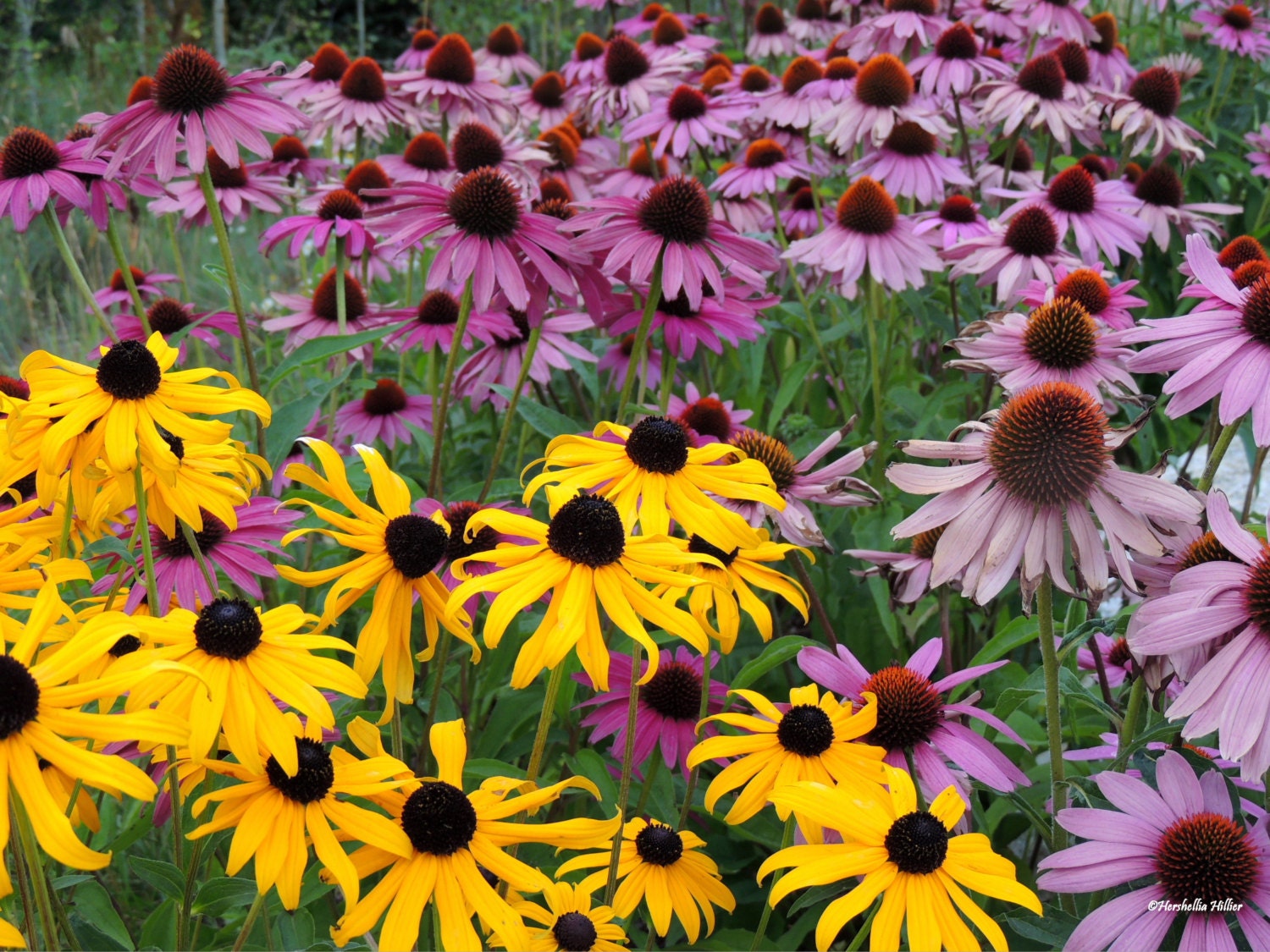

Conclusion Black-Eyed Susans are a classic staple growing all across America and Canada. Their purple petals make a nice contrast to the yellow of black. Often grown along with black-eyed Susans, purple coneflowers (Echinacea purpurea) are another favorite of both pollinators and birds, for the same reasons nectar and pollen for the bees and butterflies, seeds for the birds.

You can get an incredible contrast with yellow and purple. Purple Coneflower Soul-mate of Black-eyed Susan. Seed Envelopes contain approximately 0.02 ounces of seed and cover about 5 to 10 square feet. Echinacea purpurea Echinacea is a prized summer bloomer, medicinal, and wildlife-feeder The North American perennial has long been used for its medicinal. You can also use Black-Eyed Susans to accompany purple flowers and perennial grass. Usually reaches maturity 2 -3 growing seasons after planted, but can sometimes bloom the first growing season. Blooming for 2 months in late summer to fall, it is a great landscaping plant. Also known as Perennial Black-Eyed Susan, it has very showy yellow daisy like flowers with black discs. Plant shallow, no deeper than 1/8 - 1/4 inch deep and lightly rake to work seed in. Rudbeckia Fulgida, commonly known as Orange Coneflower is a perennial native to the Eastern United States and Canada. Can also be planted in winter during natural freeze/ thaw cycles and early spring. Purple Coneflower is also cherished for its many medicinal uses.ĭirect sow seeds into prepared soil in late fall once soil temps are below 50 degrees (usually mid to late November). Once done blooming, you can snip spent blooms or leave for songbird food. They frequent Purple Coneflower in the fall to eat the seed. Purple coneflower is a popular perennial wildflower grown for its showy flowers to heights of 24-36. Ranging in height from 2 to 4 feet, this plant holds its bloom well throughout the growing season.Īttracts butterflies and other pollinators as well as hummingbirds and songbirds. Purple Coneflower will grow just about anywhere when planted and it occurs naturally in a good share of the United States and eastern Canada.


 0 kommentar(er)
0 kommentar(er)
